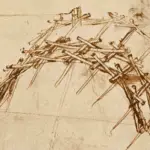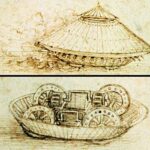Leonardo’s self-supporting bridge is one of the most famous inventions in history. It was, after all, the first-ever self-supporting bridge.
DaVinci Bridge was designed while he was under the patronage of Cesare Borgia. Borgia employed Leonardo as his military engineer and gave him unlimited passes to inspect all ongoing constructions; in turn, Leonardo would design and build magnificent war machines.
One such machine was Leonardo da Vinci’s self-supporting bridge. Its simplicity and genius cannot be underestimated. It was also a significant step forward in the development of technology, allowing people to travel more quickly and safely across rivers than ever before.
Da Vincis Bridge is a testament to the unique blend of art and engineering pioneered during the Renaissance.
This self-supporting bridge, designed by Leonardo da Vinci, exemplifies his ability to think ahead of his time with a structure that requires neither nails nor ropes.
People interested in exploring the history of civil engineering will find da Vinci’s creation informative and inspiring. It promises insights into a simple yet ingenious design that has captured the imagination of many.
The concept behind the da Vinci Bridge offers a practical example of innovation. Focusing on ease of assembly and environmental considerations, this design underlines da Vinci’s forward-thinking approach.
Understanding the mechanics of this bridge will help you appreciate its continued relevance in the world of sustainable design.
Curiosity about why da Vinci created this innovative structure leads to a deeper appreciation of his engineering skills. The historical and practical reasons for his self-supporting bridge reveal much about his mastery of art and science.
As a figure who seamlessly integrated different disciplines, da Vinci has left a lasting impact through his inventions.
The Leonardo self-supporting bridge remains a remarkable part of his legacy, showcasing his ability to innovate with limited resources.
Da Vinci Bridge Concept
Da Vinci’s bridge, known for its self-supporting design, showcases innovative design principles and mathematical foundations. The structure is famed for its ease of construction and ability to hold significant weight without fasteners.
Design Principles
Leonardo da Vinci employed a straightforward yet ingenious method to design his bridge.
The bridge features a series of logs that interlock to form a sturdy arched structure without needing nails or ropes.
This simple yet effective design allows the bridge to hold itself together purely through friction and the precise arrangement of the components.
The versatile nature of da Vinci’s bridge makes it suitable for various applications.
Its construction requires no special tools or materials beyond the wooden logs based on da Vinci bridge calculations. This straightforward setup made it highly practical for military applications in Leonardo’s time, as it could be quickly assembled or dismantled as needed.
Mathematical Foundations
The mathematical brilliance behind the da Vinci bridge lies in its geometric arrangement.
The interlocking logs form a parabolic arch, distributing forces evenly along the structure. This creates a self-supporting bridge that can stand without additional support structures.
Leonardo’s understanding of geometry and balance was instrumental in developing this concept.
By employing principles similar to those used in the construction of arches, da Vinci created a bridge that maximized stability.
Calculations involving the angles and placements of logs ensure that each component presses against the others, maintaining balance.
Diagrams and da Vinci bridge instructions are available for enthusiasts interested in exploring this further, providing a deeper look into these mathematical foundations.
Construction Techniques
Leonardo da Vinci’s bridge inventions are known for their innovative design and construction methods. This section covers the materials required and the unique self-supporting features of the design.
Materials Used
The Da Vinci Bridge primarily used simple materials like wood. Timber was strategic because it was accessible and lightweight.
The logs were often smooth to ensure they interlocked effectively without additional fasteners. This choice reflected Leonardo’s vision for a portable and quickly assembled structure.
In some modern projects, varying materials, such as metal or synthetic substitutes, can replicate the original design. This adaptation shows the timelessness of Leonardo’s ideas, as the core principles remain valuable regardless of materials.
Understanding the simplicity of the wood and how it supports the structure is crucial when considering Da Vinci Bridge construction techniques.
Self-Supporting Structure
The Da Vinci Self-Supporting Bridge is notable for its self-supporting design.
It uses a crisscross pattern, with beams strategically placed to support each other through tension and compression. This process eliminated the need for nails or rope, which was revolutionary. The section below explains how to build a Leonardo Da Vinci bridge with popsicle sticks.
Such a design leads to a stable structure capable of sustaining considerable weight.
Leonardo’s innovation is significant in bridge engineering. It demonstrates how geometry and balance create strong, reliable structures without complex binders.
This innovation has inspired countless adaptations and replicas, including educational projects like building a Da Vinci Bridge with pencils to grasp these engineering concepts better.
These hands-on activities highlight the bridge’s practicality and Leonardo’s enduring legacy in civil engineering.
Applications and Uses
Leonardo da Vinci bridge has inspired a range of applications that showcase its engineering simplicity and innovation. Used in educational settings and modern adaptations, it’s a testament to its enduring relevance and practical advantages.
Educational Projects
The da Vinci Bridge is a popular project in educational settings. Its design involves interlocking parts that don’t require any fasteners or adhesives, making it perfect for teaching principles of geometry and engineering.
Students often build this bridge using simple materials like popsicle sticks or pencils. The hands-on experience helps them learn about physics and balance.
Schools and museums sometimes offer workshops where participants follow da Vinci bridge instructions, exploring the creativity of Leonardo da Vinci.
Its simplicity allows learners to focus on assembly and structure, drawing interest from children and adults alike. Engaging in these projects enables young minds to understand timeless engineering concepts.
Modern Adaptations
Some military and engineering teams have drawn inspiration from the da Vinci self-supporting bridge for portable and temporary structures.
It’s renowned for its ease of construction. The da Vinci bridge is highly adaptable in real-life design, allowing quick deployment without nails or ropes.
While today’s military prefers modern materials, essential elements of da Vinci’s work, such as Bailey bridges, known for their quick assembly, remain in use.
Creative minds have also explored its potential in art and design. Modern architects occasionally incorporate its principles in community projects, reflecting elegance and structural ingenuity.
The Leonardo da Vinci self-supporting bridge continues to capture the imagination and serve as a model for various practical and creative applications.
Cultural and Artistic Significance
The Leonardo da Vinci bridge design showcases the ingenuity of Renaissance architecture. His self-supporting bridge is an artistic marvel and a testament to the blend of engineering and creativity.
This design reflects a unique approach to bridging gaps, literally and metaphorically, during cultural rebirth.
Leonardo da Vinci, known for his diverse talents, applied his knowledge to create innovative structures. The Leonardo da Vinci self-supporting bridge demonstrated his visionary ideas and problem-solving abilities, distinguishing him in engineering.
This bridge was more than a practical structure; it embodied Leonardo’s artistic vision. It represented a harmony of form and function, where simplicity and strength coexisted.
His use of geometry and natural forces in the bridge captures the essence of Renaissance art, where science and art were deeply interwoven.
Today, artists and engineers draw inspiration from Da Vinci’s concepts. Projects like building the Leonardo da Vinci bridge with popsicle sticks or conducting STEM activities bring his work into classrooms and workshops, engaging students with creative thinking.
The design also influenced modern artistic interpretations. Its visual appeal lies in its clean lines and elegant structure.
As a piece of art, it continues to inspire sculptures and architectural designs, offering a timeless example of merging challenges with beauty.
Da Vinci’s work on this bridge remains relevant, reflecting his enduring legacy in art and engineering.
How to Build A Leonardo Da Vinci Bridge Popsicle Sticks
Leonardo used a unique method to build the bridge: He laid out his design and then used ropes attached to pulleys to raise each stone block (or log) into place at once.
This process required careful coordination with other workers and experts, who helped him test the stability of each block before assembling the materials needed to build the bridge.
You can build a da Vinci bridge by yourself using popsicle sticks, which is called da Vinci popsicle stick bridge. But you need patience and the following materials:
- Da Vici bridge instructions
- Jumbo popsicle sticks
- Desk or table
Da Vinci Bridge Instructions for The Above Scheme
- Arrange four popsicle sticks (upper left image), and gray is up, and white is down to the two black sticks
- Lift the bridge (upper middle image)
- Put two black popsicle sticks from the right to weave the bridge (upper right image)
- Lift the bridge again (lower left image)
- Arrange two popsicle sticks; gray is up, and white is down (lower middle image)
- Put two black popsicle sticks from the right to weave the bridge (lower right image), and the bridge can stand by itself from this stage (self-supporting bridge)
- Repeat the process (lower middle and right image) according to the length of the bridge
Leonardo called it the “Bridge of Safety,” the da Vinci Bridge was just one of the ingenious structures he had designed throughout his life.
He also invented several other bridges, including a revolving bridge that, according to Leonardo da Vinci, “could be quickly packed and transported to enable fleeing armies to cross waters,” “cross streams or moats, put the bridge on the other side for easy passage of soldiers” and “fitted with a system of ropes and pulleys for quick deployment and easy transport.”
These tools are helpful for those who once aspired to military supremacy in Italy, but they are more useful for 21st-century Renaissance boys and girls.
Why Was The Self-Supporting Bridge Needed?
The parts require no specific skills to manufacture. A da Vinci bridge can also be carried onto any battlefield by a handful of men, apart from a few handymen with an axe.
It does not require nails or ropes to hold it together. The bridge is self-supporting and capable of supporting a substantial amount of weight.
Leonardo da Vinci’s self-supporting bridge was a remarkable feat of engineering. Though it was never completed, the design was sound, and it would have been functional.
Da Vinci design was ahead of its time and demonstrated his genius as an engineer.
How Much Weight Can A Da Vinci Bridge Hold?
The weight capacity of a da Vinci bridge depends on diverse factors, such as size, materials, and construction techniques. Generally, a well-constructed bridge made from sturdy materials can support several hundred pounds or more.
However, Leonardo da Vinci bridges are not designed for long-term or heavy loads. They should be used cautiously, considering material conditions, construction quality, and the stress placed on them.
11 Interesting Facts about Da Vici Bridge of All TIME
What inspired Leonardo da Vinci to design a bridge spanning the Golden Horn in Istanbul?
One of Leonardo da Vinci’s most famous architectural designs is a bridge spanning the Golden Horn in Istanbul, Türkiye.
The Golden Horn played a significant role in the Ottoman Empire. In the late 15th century, Sultan Bayezid II asked Leonardo da Vinci to design a bridge over the harbor.
Inspired by the beauty and importance of the Golden Horn, Leonardo da Vinci envisioned a functional, aesthetically pleasing, sturdy, and graceful bridge with a simple and elegant design.
Despite its simplicity, the design was highly innovative. It used a series of arches and buttresses to support the bridge, which would have made it one of the most stable bridges of its era.
Unfortunately, the design was never built, but modern engineering and technology have made it possible to construct Leonardo da Vinci’s bridge design today, allowing us to appreciate its genius.
The Golden Horn bridge design (Leonardo da Vinci’s self-supporting bridge design) inspires architects and engineers worldwide, setting a high standard for bridge design that continues to influence the field.
What is unique about the Da Vinci Bridge?
The Da Vinci Bridge is known for its innovative and unconventional design. Unlike traditional bridges, which rely on solid supports and multiple structural elements, this bridge is a self-supporting arch made entirely from interlocking wooden planks.
Its simplicity and elegance make it a remarkable engineering and architectural design feat.
How does the Da Vinci bridge work?
The bridge’s design is based on the principle of compression and tension forces. The self-supporting arch distributes the bridge’s weight evenly, utilizing the structure’s inherent strength.
The forces are balanced by precisely arranging the planks, allowing the bridge to stand without external support.
Did Da Vinci build a bridge?
Although Leonardo da Vinci is renowned for his drawings and sketches of the bridge, there is no historical evidence that he constructed it himself.
However, his detailed drawings and concepts demonstrate his deep understanding of engineering and ability to envision groundbreaking structures.
Where is the Da Vinci Bridge located?
One of the surviving replicas of the da Vinci bridge can be found in the town of Ås, Norway.
The bridge, built in 2000, is a testament to its lasting legacy. It is based on Leonardo’s original design.
Why is the Da Vinci Bridge so strong?
The strength of the da Vinci bridge lies in its unique geometric design. The interlocking structure distributes the weight evenly, enabling the bridge to withstand heavy loads.
The arch shape and the compression forces along the curved structure ensure its stability and resilience.
What is the most interesting thing about Leonardo da Vinci?
One of Leonardo da Vinci’s most fascinating aspects is his ability to bridge the gap between art and science. He was a masterful painter, prolific inventor, engineer, and anatomist.
His insatiable curiosity and passion for knowledge allowed him to make groundbreaking contributions in various fields, leaving an indelible mark on history, as supported by his famous quotes.
How did Leonardo da Vinci’s design influence modern bridge engineering?
Leonardo da Vinci’s design for the Golden Horn Bridge in Istanbul, Türkiye, has impacted modern bridge engineering. Although it was created over 500 years ago, it remains relevant and inspiring to engineers today.
Leonardo da Vinci’s innovative use of arches and buttresses to support the bridge was ahead of its time. It helped set a standard for bridge design that continues to influence the field.
Leonardo da Vinci’s principles of stability and simplicity, which he used in his bridge design, are still used in modern bridge construction worldwide.
Today’s engineers have built upon Leonardo da Vinci’s ideas and incorporated new materials and technologies to create stronger, more durable bridges.
What challenges did Leonardo da Vinci face when creating his bridge design for the Golden Horn?
Leonardo da Vinci faced many challenges when creating his bridge design for the Golden Horn in Istanbul, Turkey. One of the main challenges was the need to design a bridge that would be both functional and aesthetically pleasing.
The Golden Horn was a critical waterway in the Ottoman Empire, and the bridge accommodated both pedestrian and horse-drawn traffic while also being an attractive landmark.
Another challenge was the limited technology and materials available at the time. Unlike modern engineers who have access to advanced technologies, such as computer-aided design (CAD) and advanced materials like steel and concrete, Leonardo da Vinci had to rely on his knowledge and intuition to create a design that would be both stable and durable.
How has Leonardo da Vinci’s bridge design been preserved and celebrated over time?
Leonardo da Vinci’s bridge design for the Golden Horn in Istanbul, Türkiye, has been preserved and celebrated in several ways. Even though the design was never actually built, it remains one of Leonardo da Vinci’s most famous and revered works.
In the centuries following his death, his plans were rediscovered and studied, and today,, they are widely considered to be some of the most important architectural designs in history.
The legacy of Leonardo da Vinci’s bridge design has been preserved through books, exhibitions, and digital archives. Many books and exhibitions have showcased the design and explored its significance in engineering and architecture.
In recent years, digital archives have allowed people worldwide to access and study Leonardo da Vinci’s bridge design efficiently. This will enable them to appreciate the genius of his work and understand its impact on the field.
Additionally, efforts have been made to build full-scale models and replicas of the design, which help demonstrate its functionality and highlight its innovative features.
Leonardo da Vinci’s bridge design for the Golden Horn remains an essential piece of history and inspires architects and engineers worldwide.
Which technological advancements enabled the construction of Leonardo da Vinci’s bridge design nowadays?
Advances in technology have made it possible to construct Leonardo da Vinci’s bridge design for the Golden Horn in Istanbul, Türkiye, today. Modern engineering techniques and materials have greatly expanded the capabilities of bridge construction, allowing engineers to bring Leonardo da Vinci’s design to life in a way that was not possible in the past.
New materials like advanced composite materials and high-strength steel increase durability and stability. At the same time, computer-aided design and simulations allow engineers to test and optimize the design for optimal performance.
In addition, modern construction techniques have made building large, complex structures like bridges easier. Advances in crane technology, for example, have allowed engineers to build bridges that are both taller and longer than ever before.
Prefabricated components and modular construction methods have also made it possible to build bridges faster and with less waste.
These technological advancements have enabled engineers to construct Leonardo da Vinci’s bridge design for the Golden Horn with greater precision and efficiency, ensuring its stability and longevity for future generations.
Final Thoughts
The Da Vinci Bridge remains a testament to Leonardo da Vinci’s remarkable vision and ingenuity. Through its designs, he introduced concepts centuries ahead of his time.
His ideas inspire modern engineers who explore historical innovations to solve contemporary problems.
Leonardo’s self-supporting bridge design emphasizes his deep understanding of architectural principles and natural forces. This structure provides insight into his skillful use of geometry, balance, and aesthetics.
The self-supporting bridge exemplifies his innovative approach to problem-solving.
The unbuilt superlong Istanbul bridge da Vinci imagined demonstrated his ambitious thinking. Recent studies have shown that this design could have worked even with the materials available in his era.
This feat highlights the timeless nature of his genius.
Key Features of the Da Vinci Bridge:
- Self-supporting design
- Use of geometric principles
- Potential for modern application
Today, replicas and studies of da Vinci’s bridges continue to serve educational purposes. They provide valuable lessons in engineering, showcasing the power of creativity and foresight.
These structures inspire a new generation of thinkers and creators.
Da Vinci’s influence extends beyond art into engineering and architecture. While often unrealized in his lifetime, his bridges motivate ongoing exploration and understanding of innovative engineering solutions.
The bridge thus symbolizes a bridge between past and present, carrying forth the legacy of creativity and inventiveness.
Frequently Asked Questions
The Da Vinci Bridge is known for its innovative design and structural capabilities. It showcases Leonardo da Vinci’s remarkable engineering skills and the clever use of physics.
What is special about the Da Vinci Bridge?
The Da Vinci Bridge is unique because it is self-supporting. That means it holds itself together without nails or ropes. It relies on the tension between its components to remain stable.
How much weight can the Da Vinci Bridge hold?
While the exact weight it can support varies, the structure is known for its strength, allowing it to support significant weight for its size and design.
How strong is the Da Vinci Bridge?
The strength comes from its design, where pieces interlock in a way that distributes weight evenly. This unique arrangement provides stability and resilience.
What is the magic behind Da Vinci’s self-supporting bridge?
The magic lies in its clever use of tension and compression. The bridge features interlocking beams that create a stable structure purely through geometric principles.
What is a fact about the Devil’s Bridge?
Unlike the Da Vinci bridge, famous for its engineering, the “Devil’s Bridge” typically refers to European bridges with mythical lore. Each has unique architectural features that contribute to its distinct appearance.
What bridge is in the Mona Lisa?
The background of the Mona Lisa probably includes the Ponte Buriano Bridge, a stone structure in Italy.
What famous bridge is built during the Depression?
The Golden Gate Bridge in San Francisco, constructed during the Great Depression, is renowned for its impressive engineering and iconic design.
What is unique about Da Vinci?
Leonardo da Vinci was a visionary who significantly contributed to the arts and sciences. His diverse inventions and designs, such as the self-supporting bridge and paintings like the Last Supper, highlight his vast talents.
What is the mechanism of the Da Vinci Bridge?
The bridge uses a simple interlocking mechanism. Wooden beams cross each other, creating stability through tension and compression.
What is special about the Mathematical Bridge?
The Cambridge Mathematical Bridge is known for its precise design. Although it looks curved, it is made of straight timbers, a testament to the power of mathematics in engineering.
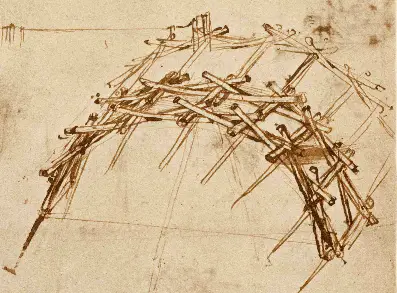
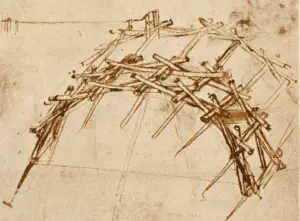
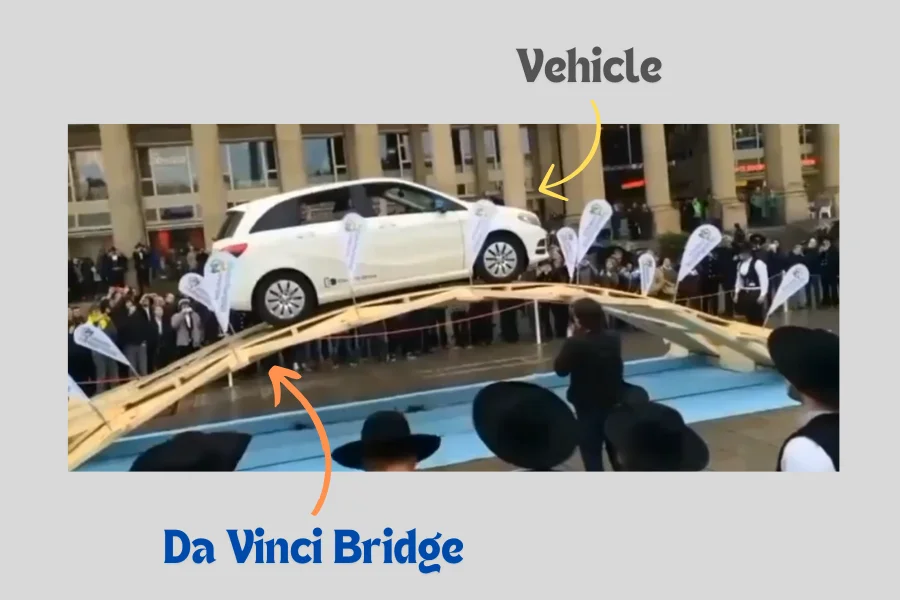
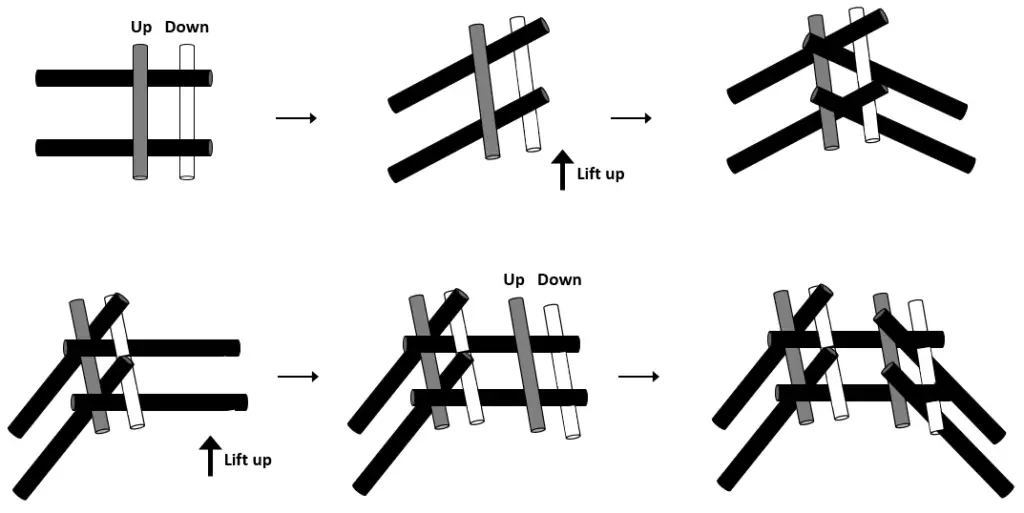

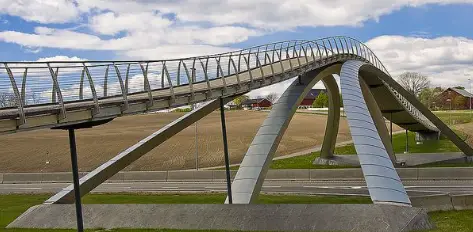
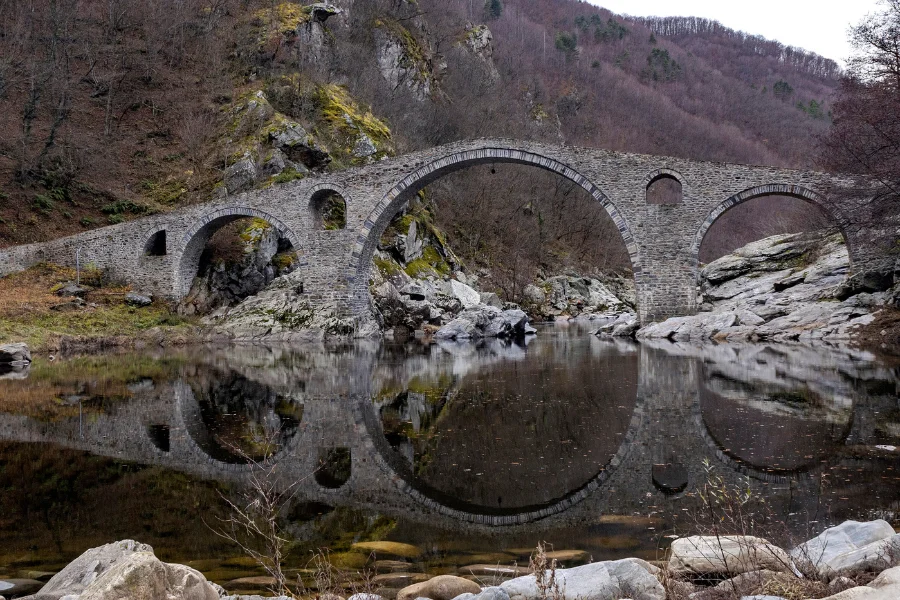
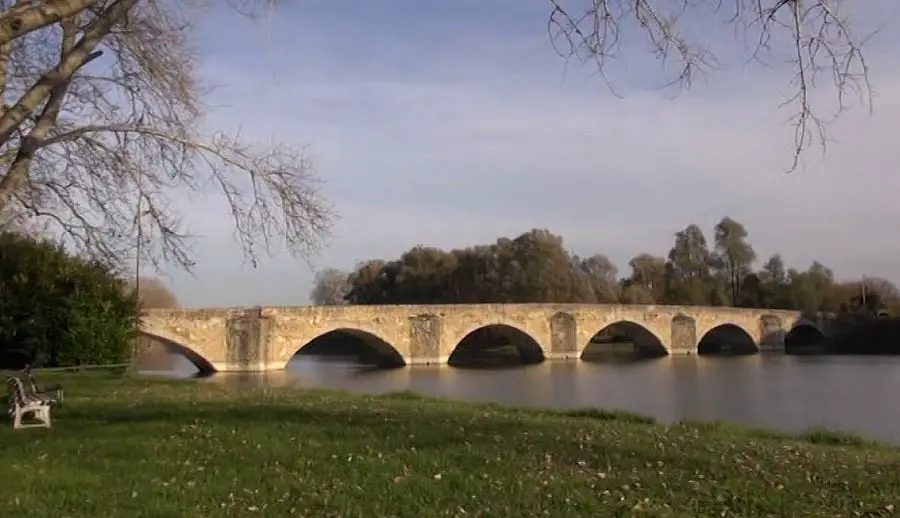
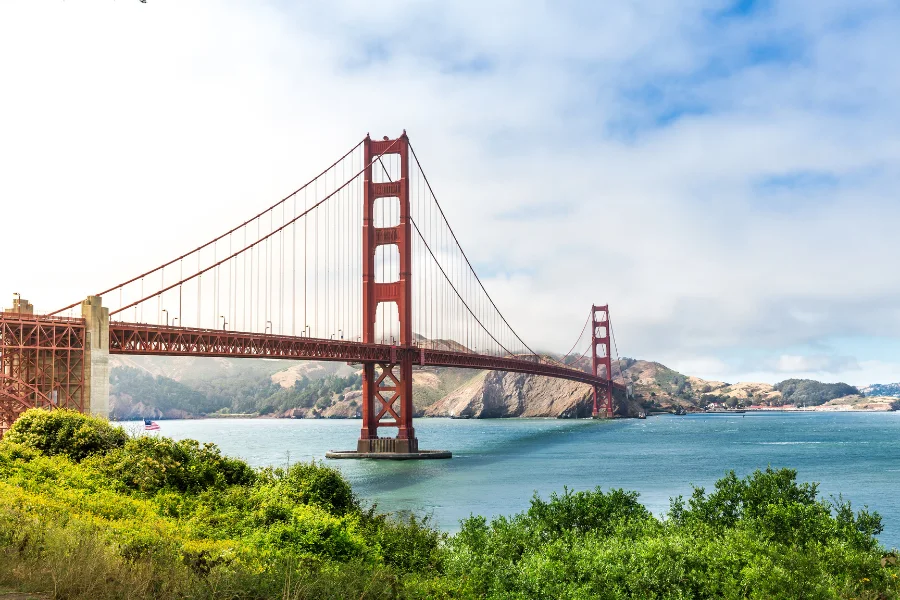
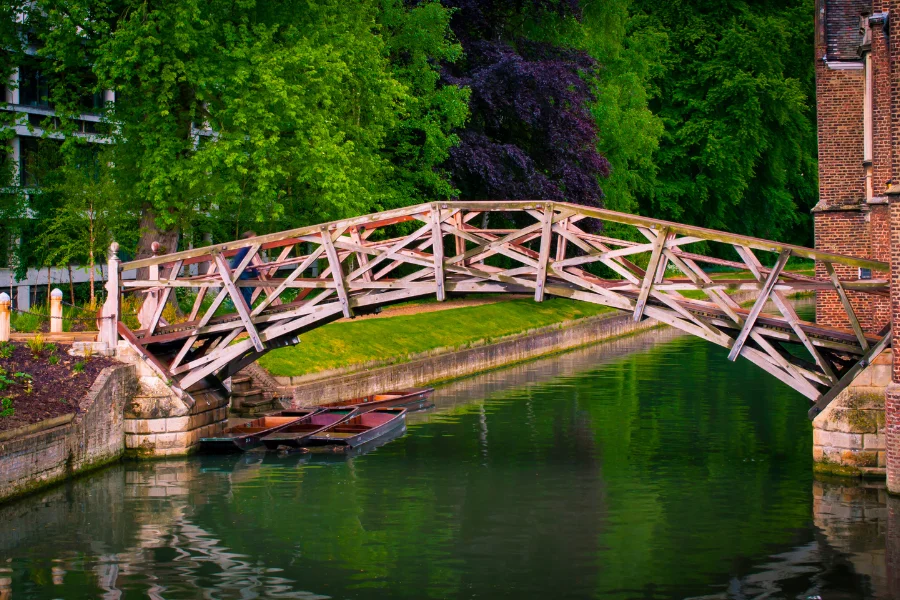
 I’m Leonardo Bianchi, the mind behind Leonardo da Vinci's Inventions. Thanks for visiting.
I’m Leonardo Bianchi, the mind behind Leonardo da Vinci's Inventions. Thanks for visiting. 